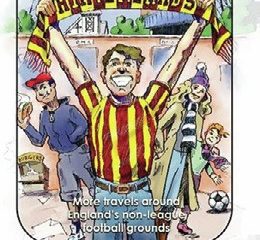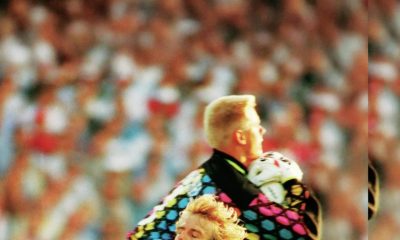

(Picture: Action Images via Reuters)
By Danny Rust
MOST clubs look to move up the football league pyramid, or at least consolidate their position in the division. However, in the United States there is no promotion/relegation format in place.
At the top of the tree, Major League Soccer is looking strong. It’s adding more clubs, gaining more supporters and enticing more legends Stateside.
However, the second tier North American Soccer League is going through a time of turmoil.
More NASL sides are looking to break into the MLS to test themselves against the big names and gain more revenue from television money and increased attendances.
Minnesota United will become the latest side to leave the NASL to join the MLS next year.
But it seems as though sides are now even looking to broker a deal to get out of the second tier in favour of a move to the United Soccer League – the United States’ third tier.
Tampa Bay Rowdies and Ottawa Fury will be involved in the USL from next season, it was announced in October.
Despite seemingly taking a step backwards, the Rowdies feel they are actually moving forward.
The Florida club’s chairman and CEO Bill Edwards said: “We are excited to join the United Soccer League. I have said from the day I acquired controlling interest in this club that I wanted to make it one of the most successful teams in North America.
“The Rowdies’ move to the USL is a positive step toward reaching the long-term goals of the club.”
The Rowdies have certainly shown ambition in the last 24 months. The surprise signing of former West Ham and England international midfielder Joe Cole was a coup earlier this season, and he joined former Leyton Orient defender Tamika Mkandawire and Freddy Adu – who was expected to be a superstar as a teenager but has failed to deliver in spells with 12 previous clubs across eight different countries.
The Floridians have welcomed numerous big names in the past, including Rodney Marsh and England’s shortest reigning international manager Sam Allardyce.
But the Rowdies are just one of many American franchises to go bust and be forced to start again.
The original Tampa Bay Rowdies were founded in 1975 and they competed in the old NASL – when it was USA’s top flight – before the league folded in 1984. The franchise continued to ply its trade in various other divisions before going bankrupt in 1993.

Freddy Adu has never fulfilled his potential, and is with the Rowdies (Picture: Action Images via Reuters)
But the club was revived – under the name FC Tampa Bay – before reverting to their original name in 2011, once Edwards had acquired rights to the iconic name.
Canadian side Ottawa Fury have also confirmed their departure from the NASL despite only joining the division two years ago.
The Fury replaced an amateur club of the same name, which played in the fourth tier – the USL’s Professional Development League – between 2005 and 2013.
Those two departures, along with Minnesota United’s transfer to the MLS, leaves the NASL with just ten clubs.
The San Francisco Deltas have agreed to become a member of the NASL from next term, but two franchises remaining in the NASL have uncertain futures. Florida side Fort Lauderdale Strikers and Rayo OKC are both financially troubled and so if both sides go bankrupt, then the United States’ second tier could be left with only nine sides.
NASL commissioner Bill Peterson has maintained that the league is not in danger.
“The NASL operates in an environment where owners are free to take their clubs wherever they choose,” he said. “All we can do is acknowledge that reality and move forward with our business, which is exactly what we’re doing right now. We’ve never had a stronger and more unified group of owners who are committed to the league’s model, its structure and its long-term vision.”
The defections have seemingly not helped the league, but Peterson has since revealed that the NASL remains committed to growth, “with a half-dozen serious expansion discussions in progress”.
With each league in the United States run by independent organisations and having different commissioners overseeing them, it is highly unlikely for the leagues to unite and create a pyramid that includes promotion and relegation.
But with so many clubs on the brink of extinction and others looking to change leagues, maybe it is time for US Soccer to look at ways for clubs to change divisions without having to negotiate a move and to support some of the smaller clubs.
*This article originally featured in Late Tackle. The next edition is available on April 20th.


Book Reviews
Book Review: Chris Towers finds right mix

Book Reviews
Book Review: Sir Geoff Hurst hits net












